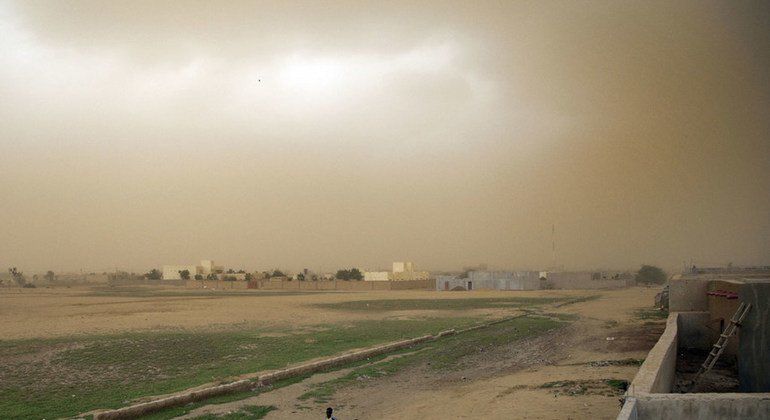That is the amount of sand and dust that enters the atmosphere annually according to the annual report of the World Meteorological Organization (WMO) on the storms that disperse such particles through the borders around the world.
Reports of the UN weather agency warn that although the amount of dust decreased marginally by 2024, the impact on humans and economies is increasing.
WMO estimates that More than 330 million people in 150 countries are affected by sand and dust storms.which leads to premature deaths and other health consequences, in addition to high economic costs.
More than a dark sky
“Sand and dust storms not only mean dirty windows and misty skies. They damage the health and quality of life of millions of people and cost many millions of dollars, ”said Celeste Saul, general secretary of WMO.
While the sand and dust movement is a natural climate process, the increase in land degradation and poor water management, in recent decades, they have exacerbated prevalence and geographical propagation.
The dust and sand particles, of 80 percent of which come from North Africa and the Middle East, can be transported to thousands of kilometers across borders and oceans.
“What begins in a storm in the Sahara, can obscure heavens in Europe. What rises in Central Asia can alter air quality in China. The atmosphere does not recognize borders“Sara Basart, OMM scientific officer, said in an informative session in Geneva.
And this is precisely what happened in 2024. The dust and sand of the west of Sahara traveled to the Canary Islands of Spain. And the fierce winds and drought in Mongolia brought dust to Beijing and northern China.
Rapid growth challenge
“These extreme climatic events are not local anomalies. Sand and dust storms are quickly becoming one of the most past but high reach global challenges of our time“A senior official said Thursday morning speaking on behalf of Philémon Yang, president of the General Assembly.
Storms can darken sunlight, altering ecosystems on land and ocean. In addition to environmental impacts, these climatic events have deep impacts on humans and their economies.
“Once considered seasonal or localized, sand and dust storms have become a persistent and intensifying global danger,” said Rola Dashti, co -president of the UN coalition in the combination of sand and dust storms.
Between 2018-2022, more than 3.8 billion people were exposed to dust particles, with the worst affected regions that experienced dust exposure 87 percent of the time during that same period.
These particles exacerbate cardiovascular diseases and have other adverse health effects, which leads to 7 million premature deaths every year, especially among the already vulnerable populations.
Mr. Yang referred to this as “amazing human cost”: from an economic perspective, storms can lead to a 20 percent reduction in crop production between rural communities, pushing them towards hunger and poverty.
Only in the Middle East and North Africa, economic losses in 2024 as a result of sand and dust storms represented 2.5 percent of regional GDP.
I can't go alone
WMO is asking the international community to invest more in early alert systems and data monitoring.
“No country, no matter how prepared, can face this challenge only. Sand and dust storms are a trans-limit threat that requires coordinated, multisectoral and multilateral action, ”said Mrs. Dashti.
With 2025-2034 he declared the decade in the combination of sand and dust storms, Mr. Yang said that this should be a turning point. He urged Member States to move from consciousness to action, and fragmentation to coordination.












